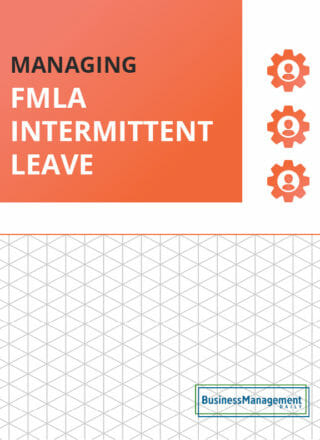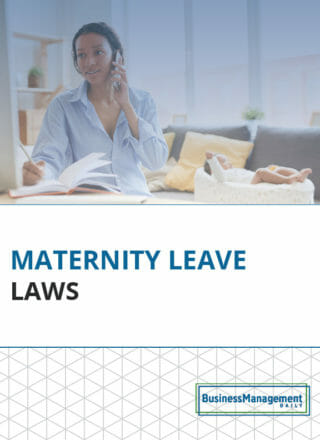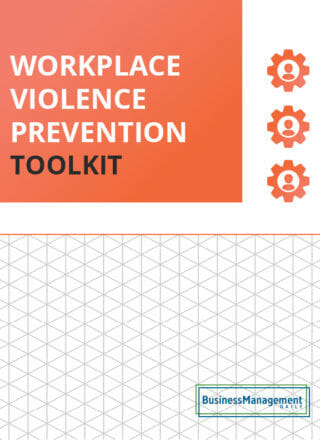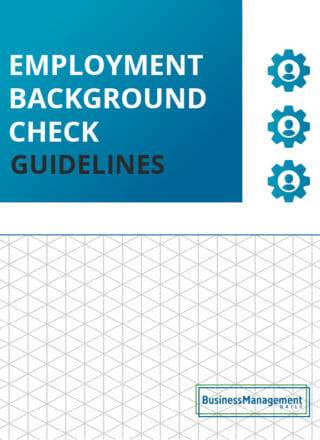FMLA retaliation — what employers need to know

The FMLA is a very important employment law that provides key protections for employees, but it also poses a number of compliance challenges and risks for employers. Employers accused of FMLA retaliation can incur harsh penalties in court, but navigating the proper handling of FMLA leave isn’t always black and white. Employers often believe that they are acting in good faith and adhering to the FMLA and all relevant employment laws, yet still find themselves in hot water with an accusation of FMLA retaliation.
If you need help navigating the dos and don’t of FMLA compliance to avoid accidentally engaging in FMLA retaliation, we’ve compiled some key tips for you. Learn more about what constitutes FMLA retaliation and key areas where claims arise.
What is the FMLA?
The Family and Medical Leave Act (FMLA) is a federal law that provides job-protected unpaid leave for employees that need time off to attend to covered family or medical needs. The FMLA regulations allow for up to twelve weeks of unpaid leave within a single 12-month period taken for covered uses, including:
-
The birth, foster placement, or adoption of a child. Family bonding time may be taken at any time during the child’s first year with the family.
-
The presence of a serious health condition that makes the employee unable to perform the essential functions of their job. Employees may also take time off to receive medical treatment related to an eligible serious medical condition.
-
Time off to care for a spouse, child, parent, or other eligible family member with a serious health condition.
-
Military caregiver leave and other qualifying exigencies related to a spouse or immediate family member on active duty.
To qualify for FMLA leave, the employee must meet some additional eligibility guidelines, including:
-
Working for a covered employer. Covered employers include all government agencies and location educational agencies, as well as private employers with 50 or more employees working within a 75-mile radius.
-
Meeting required hours and length of service requirements. The employee must have worked for the same employer for at least 12 months and clocked in at least 1,250 hours of work during the preceding 12 months.
-
Possessing a qualifying reason. Employees will need to provide a medical certification form signed by a medical professional verifying their need for FMLA leave.
What is FMLA retaliation?
FMLA retaliation occurs when employers discriminate against or take adverse employment action against an employee engaging in a protected activity such as using or requesting FMLA leave. The U.S. Department of Labor (DOL) states that an employer is prohibited from discriminating or retaliating against an employee or prospective employee for exercising or attempting to exercise any FMLA right, including taking FMLA leave.
Similarly, FMLA interference is another key concern for employers. FMLA interference occurs when an employer interferes with an eligible employee’s right to request and use FMLA leave. While this can come in overt forms such as outright denying eligible employees the right to take FMLA leave, it can also include other things such as discouraging the use of FMLA leave or requesting that employees finish up some work while on leave.
FMLA retaliation or interference claims can be costly to employers. Employers may be ordered to pay damages including back pay for lost wages, bonuses, benefits, pensions, and commissions. Punitive damages, attorneys fees, and damages for emotional distress may also be ordered.
Common FMLA retaliation concerns
Here are some key areas for employers to avoid or at least tread lightly around in order to help prevent accusations of FMLA retaliation.
Improper reinstatement after leave
Employers are required to reinstate employees returning from FMLA leave to an equivalent position to the one that they held prior to leave. In most cases, employees simply return to the same exact role that they held prior to leave. When that’s not possible, employers need to reinstate them to a role with substantially similar job duties as well as equivalent pay, benefits, and conditions of employment. Issues often arise when employers try to move employees into new roles that may not feel fully equivalent to the one that they held prior to taking leave.
An employer may accommodate an employee’s request to be reinstated to a different shift, schedule, or position that better suits the employee’s needs when returning from leave. Employees may also be offered a promotion. However, an employee cannot be forced by the employer to accept a different position that is not considered an equivalent role against their wishes. Placing an employee into a role that could be considered a demotion or that is largely equivalent but bears less responsibility (such as moving from supervising a large team to a very small team or where commission earning will be considerably lower), can be considered FMLA retaliation.
Terminating employees on FMLA leave
Terminating an employee on FMLA leave isn’t inherently FMLA retaliation, but employers should proceed with caution here as it is a common reason for FMLA retaliation accusations. Employees cannot be terminated for requesting or using FMLA leave or protections, and an employee’s use or attempts to use FMLA leave should not be a factor in termination decisions (aside from in thoroughly investigated cases of FMLA abuse).
You may terminate employees on FMLA leave in certain circumstances, such as workforce reductions or companywide reorganization. Though you still cannot consider the employee’s FMLA leave as a factor in the decision. When condensing roles during a reorganization, it may seem most practical to keep the employee that is currently available rather than the one that is on leave, but you’ll need to set that factor aside to avoid committing FMLA retaliation.
You also can’t create a layoff list that includes absenteeism as one of the criteria unless you exclude any time the worker was on FMLA leave or was absent due to an FMLA-covered event. It’s alright if an employee that is currently on leave or that has put in an FMLA leave request ends up being one of the workers laid off based on other factors such as seniority and skill set. Just be sure that you can properly justify that choice and that it was not based on the employee’s leave status.
Unequal treatment of employees who took FMLA leave
One of the best ways to avoid FMLA retaliation claims is to put clear, detailed policies in place and to enforce them consistently. Employers that do not apply their policies consistently across the board open themselves up to FMLA retaliation claims. Even if inconsistent or unequal treatment is not the direct result of an employee taking FMLA leave, it does open the door for FMLA retaliation accusations.
For example, if you fire an employee with a poor performance record who took FMLA leave but retain one with a similar record who did not, that employee could reasonably believe that their use of FMLA leave was a factor and thus you’re opening yourself to an FMLA retaliation lawsuit. Maintaining detailed documentation regarding employee performance, unapproved absences or tardiness, and any violations of company policy can help protect you in the event that wrongful termination or FMLA retaliation complaints arise after you fire an employee.
Maintaining clear, consistent processes and policies can also ensure that all managers are handling disciplinary action and terminations in a relatively uniform manner to avoid real or perceived unequal treatment towards employees that use FMLA leave.
Even more minor disparities in treatment can be perceived as FMLA retaliation. For example, if an opportunity such as a professional development course is made available to all employees during a staff member’s leave, it’s a good idea to offer that same opportunity under the same conditions (ie. if you paid for the other employees’ time and course fees you should do the same for the returning employee). Or if a department gets upgraded work equipment such as new laptops, employees who take FMLA should also generally have the opportunity to get better equipment when they return so that they are not singled out and given more outdated resources to work with simply because they were on leave.
Scheduling and time off complaints
Under the FMLA, it is acceptable to request that employees work with employers on time off scheduling and that they provide reasonable notice of time off when possible. However, employers should be cognizant of how they handle such matters. Managers and HR representatives should work to engage with the employee in a positive manner regarding time off scheduling.
They must be cautious to avoid the perception that they are discouraging employees from using their FMLA leave or that taking such leave will be held against them. Managers should not criticize employees for taking time under the FMLA as negative remarks could be held against the employer in court if a retaliation claim were to arise.
In addition, employers should not count FMLA-related absences against the employee under their attendance policy or when completing performance evaluations. Some employees continue to take time off or receive scheduling accommodations under the Americans With Disabilities Act (ADA) upon their return from FMLA leave, and these absences should also not be considered in employment decisions such as performance reviews, promotion or demotion considerations, or counted adversely under the company’s attendance policy.
FMLA abuse investigations
Employers can and should investigate suspected FMLA abuse, but it’s important to proceed with caution when you suspect FMLA abuse to avoid accusations of FMLA retaliation or interference. Employers often have misconceptions regarding what employees can do during leave, which can lead to FMLA retaliation lawsuits if the employers acts too swiftly and terminates an employee without proper investigation.
In a recent case, DaPrato v. Massachusetts Water Resources Authority, an employer terminated an employee who had taken FMLA leave to recover from foot surgery after they found out that the employee had gone on vacation during the requested leave. The employee sued for FMLA retaliation and was awarded over 1.3 million dollars in damages, including punitive damages, after the State Supreme Court ruled that the employer was not reasonable in their belief that FMLA abuse had occured. The employee had limited their activities while on vacation and accurately represented their condition to their employer.
If it appears that an employee is engaging in FMLA abuse, employers must make discipline or termination decisions based on a rational review of the facts, including the doctor’s certification. It’s best to seek legal advice from an attorney or law firm with FMLA experience if you are unsure of how to proceed with an FMLA abuse investigation or related employment actions.
Additional resource: Read more about FMLA requirements and what they mean for your business.





